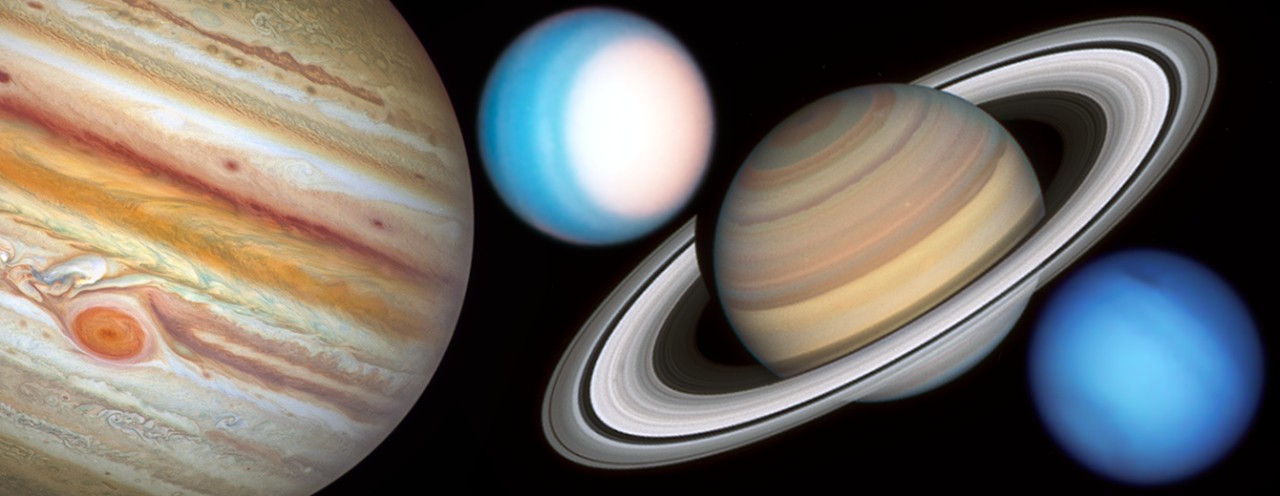The vast expanse of the cosmos holds countless mysteries and celestial wonders, with our very own Solar System standing out as a captivating marvel. Comprising the Sun, eight planets, their moons, and a myriad of other celestial bodies, our Solar System offers a window into the grandeur and complexity of the universe. In this blog post, we will embark on a journey through the key components of our Solar System, shedding light on their unique characteristics and the awe-inspiring phenomena that define them.
The Radiant Heart: The Sun
At the center of our Solar System reigns the radiant heart – the Sun. This massive, luminous ball of hot, ionized gas plays a pivotal role in sustaining life on Earth. With a diameter of about 1.4 million kilometers, the Sun’s gravitational pull governs the orbits of all the planets in our cosmic neighborhood. Its energy production, fueled by nuclear fusion, generates the light and heat that make life possible on Earth. Solar flares and prominences add a dynamic and unpredictable element to the Sun, reminding us of its powerful and ever-changing nature.
The Inner Terrestrial Planets
Moving outward from the Sun, we encounter the inner terrestrial planets – Mercury, Venus, Earth, and Mars. These rocky worlds share common characteristics, such as solid surfaces and relatively small sizes compared to their distant gas giant counterparts. Mercury, the closest planet to the Sun, experiences extreme temperature fluctuations, swinging between scorching hot days and freezing nights due to its lack of a substantial atmosphere. Venus, often referred to as Earth’s “sister planet,” boasts a thick, toxic atmosphere that traps heat, resulting in surface temperatures hot enough to melt lead.
Earth, the third planet from the Sun, is our home and a haven for life. Its diverse ecosystems, vast oceans, and protective atmosphere create the ideal conditions for a myriad of species. The Moon, Earth’s only natural satellite, influences tides and has served as a source of inspiration for poets, scientists, and dreamers throughout human history. Mars, the fourth terrestrial planet, captivates our imagination with its rusty-red surface and the possibility of hosting signs of past or present life.
The Majestic Gas Giants
Beyond the asteroid belt, we encounter the majestic gas giants – Jupiter and Saturn. These colossal planets are primarily composed of hydrogen and helium, with no solid surfaces. Jupiter, the largest planet in our Solar System, boasts a mesmerizing array of atmospheric features, including the iconic Great Red Spot, a massive storm that has raged for centuries. Jupiter’s powerful magnetic field generates intense radiation belts, making it a cosmic powerhouse.
Saturn, known for its stunning ring system, consists of icy particles ranging in size from tiny grains to enormous boulders. These rings, made visible by sunlight reflecting off their surfaces, add to the celestial beauty of our Solar System. Both Jupiter and Saturn have numerous moons, each with its own unique characteristics and mysteries waiting to be unraveled by future explorations.
The Icy Giants and Beyond
Uranus and Neptune, the ice giants of our Solar System, mark the outer boundary of our cosmic neighborhood. These distant planets possess thick atmospheres composed mainly of hydrogen, helium, and methane. Uranus, known for its extreme axial tilt, appears to roll on its side as it orbits the Sun. Neptune, the farthest planet from our star, experiences powerful winds and hosts the Great Dark Spot, a storm system reminiscent of Jupiter’s Great Red Spot.
Beyond Neptune lies the Kuiper Belt, a region populated by icy bodies and dwarf planets, including Pluto. Once considered the ninth planet, Pluto was reclassified as a dwarf planet in 2006 by the International Astronomical Union. The New Horizons spacecraft’s flyby in 2015 provided humanity with the first up-close images of this distant world, revealing a diverse landscape of mountains, plains, and icy plains.
Conclusion
Our Solar System, a testament to the vastness and diversity of the cosmos, continues to be a source of fascination and exploration. From the scorching heat of the Sun to the icy depths of the Kuiper Belt, each celestial body holds its own secrets and contributes to the intricate dance of gravitational forces that shapes our cosmic neighborhood. As our understanding of the universe deepens and technological advancements pave the way for new missions and discoveries, the wonders of the Solar System will undoubtedly continue to inspire awe and ignite our curiosity about the mysteries of the cosmos.

Leave a Reply